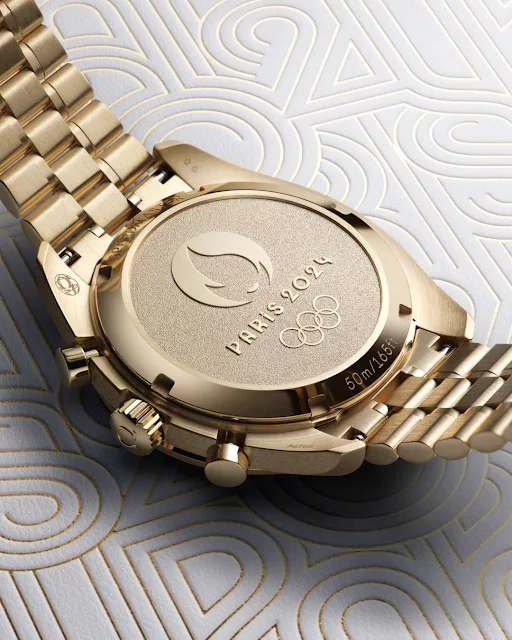At the Olympic Games Paris 2024, Omega will be the Official Timekeeper for the 31st time since 1932 with several innovations that we describe here
On July 26th, the Olympic Games Paris 2024 will commence, and for the 31st time since 1932, Omega will take on the role of Official Timekeeper, ensuring precise timing for all 329 events across 32 sports. Following the Olympics, the Paralympic Games will begin on August 28th, where Omega’s expertise will once again be indispensable.
Beach Volleyball: High-definition cameras around the field capture data, eliminating the need for sensors in uniforms. The system tracks athletes' movements and the ball, showing match details such as distances covered, speeds, jump heights, and shot types.
Tennis: By tracking players, rackets, and the ball in real time, Computer Vision measures reaction times for returned serves. This data identifies correlations between winners and their reaction times, providing insights into player performance.
With over 90 years of experience, the Swiss brand brings unparalleled knowledge and the most advanced technology it has ever delivered to Paris.
Since the Los Angeles Games in 1932, when Omega first assumed responsibility for Olympic timekeeping, the company has continually evolved and upgraded the equipment relied upon by athletes, judges, and spectators.
For a detailed look at the main advancements in timekeeping technology from 1932 to 2020, read our feature article "Omega and the Olympic Games: A History of Records and Innovations".
Here, we highlight the cutting-edge technology that will debut at the Paris 2024 Olympic Games.
Scan ‘O’ Vision Ultimate
At Paris 2024, Omega will introduce the next generation of its essential photofinish technology, the Scan ‘O’ Vision Ultimate.
This state-of-the-art camera can capture up to 40,000 digital images per second at the finish line, offering unprecedented clarity for judges to determine race results. The new model surpasses the previous Scan ‘O’ Vision Myria, which recorded 10,000 images per second. With dedicated color sensors, the images are cleaner and free from pixel interference. Debuting at the Olympic Games, the Scan ‘O’ Vision Ultimate will produce composite photos of every athlete crossing the line, ensuring precise results in athletics and track cycling.
Computer Vision Technology
Omega’s new Computer Vision Technology will track athletes and objects throughout the events, providing valuable performance data.
Using single or multi-camera systems, the technology feeds AI models trained for each sport. This live data tells the comprehensive story of an event, offering insights into critical moments that determine outcomes. Unlike previous systems, this technology does not require physical tags on athletes. The data enhances TV viewing experiences, supports judgment calls, and generates official results, providing an in-depth analysis of the Olympic Games.
Below we provide a few examples of how Computer Vision will be used at Paris 2024 in various sports.
Beach Volleyball: High-definition cameras around the field capture data, eliminating the need for sensors in uniforms. The system tracks athletes' movements and the ball, showing match details such as distances covered, speeds, jump heights, and shot types.
Diving: Cameras track divers from start to entry into the water, using AI and algorithms to create a 3D vision of the dive. Metrics like airtime and entry speed help judges review performances. The system also tracks the “safe gap,” the minimum distance between the athlete and the board, ensuring safety and accuracy in scoring.
Tennis: By tracking players, rackets, and the ball in real time, Computer Vision measures reaction times for returned serves. This data identifies correlations between winners and their reaction times, providing insights into player performance.
Vionardo Next Generation Graphics Technology
Omega’s Vionardo graphics technology will enhance the viewing experience with 4K UHD graphics, delivering clear and engaging visuals in real time.
Since debuting its role in TV graphics at Innsbruck 1964, Omega has continually improved this aspect of sports broadcasting. The new graphics will be available in multiple languages, tailored to the needs of rights-holding broadcasters. The interactive interface can be operated by Olympic Broadcaster staff or volunteers. This technology can also be used remotely, reducing the infrastructure footprint at venues and improving sustainability.
At Paris 2024, Omega will deploy these graphics for each sport at competition venues and at the International Broadcast Center (IBC) for remote productions. The graphics will be provided to OBS (Olympic Broadcasting Services) and distributed to Media Rights-Holders worldwide.
To mark the event, Omega has created three commemorative timepieces.
The first is the Seamaster Diver 300M “Paris 2024” Special Edition, a 42 mm model crafted from stainless steel and 18K Moonshine Gold, Omega’s very own yellow gold alloy, which offers a more subtle hue, as well as high-resistance to fading.
Turning the watch over reveals a commemorative caseback with an inlayed 18K Moonshine Gold medallion, showcasing the distinctive element of the Paris 2024 emblem against a las
er-ablated background. Full details about this model can be found here.
er-ablated background. Full details about this model can be found here.
The other models are two Speedmaster Chronoscope "Paris 2024" Special Editions, one in stainless steel and the other in 18K Moonshine Gold.
Both models feature commemorative casebacks showcasing a stamped medallion with a frosted base, highlighting a mirror-polished Paris 2024 logo and the stamped words "Paris 2024" and the Olympic Rings. Read more about these timepieces here.
Omega has already extended its global partnership with the International Olympic Committee through to 2032. This important announcement means that the Games of the XXXV Olympiad in Brisbane 2032 will mark 100 years since the start of OMEGA’s relationship with the Olympic Games, which dates back to 1932 in Los Angeles.
It will be the brand’s 35th time as the Official Timekeeper of the Olympic Games. Upcoming editions include the winter games in Milano Cortina 2026 and Los Angeles 2028, where Omega’s Olympic Games timekeeping journey first began. omegawatches.com
























COMMENTS